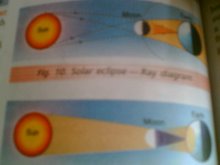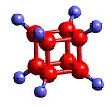Monday, 30 July 2007
Alphabets in nature Unusual quest
On Nov. 16, 2005............................
Kjell Sandved was sitting on a tree branch in Panama when he found himself staring into the face of a viper. The poisonous snake had coiled its body a few times around a nearby branch. Its neck rested on the coils.
"Its head," Sandved says, "was sticking out and looking at me."
Instead of reacting with terror and panic, like most people would, Sandved noticed something remarkable. Resting in this position, the snake looked like the letter "Q."
It wasn't the first letter of the alphabet that Sandved had picked out while observing nature. In 1975, the talented photographer had published a poster displaying every letter in the alphabet, each one found somewhere on the wings of butterflies and moths. Later, he finished a colorful collection of letters, numbers, and symbols found throughout the natural world. Completing both alphabets consumed him for 24 years.
Now 83 years old, Sandved has continued his quest. Recent photographs include patterns that resemble faces, eyes, ampersands, the Greek letter pi, and the shapes of cats and mice.
What Comets Are Made Of
Astronomers are watching a comet break into pieces, practically before their eyes. Their observations, reported by scientists at Johns Hopkins University's Applied Physics Laboratory in Laurel, Md., are giving surprising insight into the structure of these space objects.
Comets are fairly small (about 12 miles across or less) balls of ice, rock, and dust that make long, noncircular orbits around the sun. When a comet gets near the sun, the star's heat melts some of it, creating what looks like a tail. At this stage, it looks somewhat like a tadpole.
Comets sometimes burst into pieces when the sun's heat turns their ice into water vapor. By studying these chunks, astronomers can compare the material at the center of a comet with material at its surface.
The scientists expected that a comet's center would look different from its surface. That's because comets probably formed at the same time as the solar system, so the material at the center has probably remained unchanged for just as long. The surface material, on the other hand, is changed by the sun's radiation.
For the new study, the Johns Hopkins team observed the breakup of a comet called 73P/Schwassmann-Wachmann 3 (SW3). The comet orbits the sun every 5.34 years.
In 1995, SW3 split into at least five chunks. In June 2006, it passed within a relatively close 11.7 million kilometers (7.3 million miles) of Earth. Around that time, it disintegrated even more. Scientists counted 68 fragments.
The two largest chunks are called B and C. Each is several hundred meters wide. The scientists studied both chunks using NASA's Infrared Telescope Facility and the Keck II telescope, both on Hawaii's Mauna Kea. The researchers found that B and C have nearly identical compositions, with the same proportions of substances such as water and carbon dioxide.
Those results suggest that comets have maintained more of their original form than scientists had expected. "We were really lucky" that the comet came close enough for astronomers to make observations soon after a breakup, says lead researcher Neil Dello Russo.
Because this was the first study of its kind, the scientists don't yet know whether all comets are the same, inside and out
Sunday, 29 July 2007
Alternative Fuel Vehicles (AFVs)
Interest in vehicles powered by alternative energy sources has been gaining traction in large part due to high gas prices and an increased awareness of global warming, which according to a recent Intergovernmental Panel on Climate Change (IPCC) report[1] is 90% likely caused by humans. The "fuel" is the set of chemicals which are oxidized and reduced to release the stored energy. In a battery or fuel cell powered vehicle, this is electricity. In some circumstances, however, electricity may be provided directly to a mobile electric engine, such as an electrified trolley or train, or a magnetically levitated train. In such cases, electricity itself may be treated as an alternative "fuel", since it replaces fuel energy used in transportation.
Diesel type biofuels
Hempseed oil fuel or other straight vegetable oils
Biodiesel
Biodiesel refers to a diesel-equivalent processed fuel derived from biological sources (such as vegetable oils) which can be used in unmodified diesel-engine vehicles. It is thus distinguished from the straight vegetable oils (SVO) or waste vegetable oils (WVO) used as fuels in some diesel vehicles.
Diesel type biofuels
Hempseed oil fuel or other straight vegetable oils
Biodiesel
Biodiesel refers to a diesel-equivalent processed fuel derived from biological sources (such as vegetable oils) which can be used in unmodified diesel-engine vehicles. It is thus distinguished from the straight vegetable oils (SVO) or waste vegetable oils (WVO) used as fuels in some diesel vehicles.
Alternatives to petroleum-based vehicle fuels
Demand for Alternative Fuels
In the year 2000, there were about eight million vehicles around the world that ran on alternative fuels, indicating an increasing popularity of alternative fuels[citation needed]. There is growing social interest, and a perceived economic and political need for the development of alternative fuel sources. This is due to general environmental, economic, and geopolitical concerns of sustainability.
The major environmental concern, according to an IPCC report, is that "Most of the observed increase in globally averaged temperatures since the mid-20th century is very likely due to the observed increase in anthropogenic greenhouse gas concentrations" [1]. Since burning fossil fuels are known to increase greenhouse gas concentrations in the atmosphere, they are a likely contributor to global warming.
The main purpose of fuel is to store energy in a form that is stable and can be easily transported from the place of production to the end user which helps in many ways such as transportation. Almost all fuels are chemical fuels, that store chemical potential energy. The end user is then able to consume the fuel at will, and release energy, usually in the form of heat for a variety of applications, such as powering an engine, or heating a building, such as a home.
The definition of Alternative Fuel varies according to the context of its usage. In the context of petroleum substitutes, the term 'alternative fuel' can imply any available fuel or energy source, and does not necessarily refer to a source of renewable energy. In the context of environmental sustainability, 'alternative fuel' often implies an ecologically benign renewable fuel.
Alternative Fuels, also known as non-conventional fuels, are any materials or substances that can be used as a fuel, other than conventional fuels. Conventional fuels include: fossil fuels (petroleum (oil), coal, propane, and natural gas), and also in some instances nuclear materials such as uranium. Some well known alternative fuels include biodiesel, ethanol, butanol, chemically stored electricity (batteries and fuel cells), hydrogen, methane, natural gas, vegetable oil, biomass, and peanut oil.
In the year 2000, there were about eight million vehicles around the world that ran on alternative fuels, indicating an increasing popularity of alternative fuels[citation needed]. There is growing social interest, and a perceived economic and political need for the development of alternative fuel sources. This is due to general environmental, economic, and geopolitical concerns of sustainability.
The major environmental concern, according to an IPCC report, is that "Most of the observed increase in globally averaged temperatures since the mid-20th century is very likely due to the observed increase in anthropogenic greenhouse gas concentrations" [1]. Since burning fossil fuels are known to increase greenhouse gas concentrations in the atmosphere, they are a likely contributor to global warming.
The main purpose of fuel is to store energy in a form that is stable and can be easily transported from the place of production to the end user which helps in many ways such as transportation. Almost all fuels are chemical fuels, that store chemical potential energy. The end user is then able to consume the fuel at will, and release energy, usually in the form of heat for a variety of applications, such as powering an engine, or heating a building, such as a home.
The definition of Alternative Fuel varies according to the context of its usage. In the context of petroleum substitutes, the term 'alternative fuel' can imply any available fuel or energy source, and does not necessarily refer to a source of renewable energy. In the context of environmental sustainability, 'alternative fuel' often implies an ecologically benign renewable fuel.
Alternative Fuels, also known as non-conventional fuels, are any materials or substances that can be used as a fuel, other than conventional fuels. Conventional fuels include: fossil fuels (petroleum (oil), coal, propane, and natural gas), and also in some instances nuclear materials such as uranium. Some well known alternative fuels include biodiesel, ethanol, butanol, chemically stored electricity (batteries and fuel cells), hydrogen, methane, natural gas, vegetable oil, biomass, and peanut oil.
Global warming
Burning oil releases carbon dioxide into the atmosphere, which contributes to global warming. Per energy unit, oil produces less CO2 than coal, but more than natural gas. However, oil's unique role as a transportation fuel makes reducing its CO2 emissions a particularly thorny problem; amelioration strategies such as carbon sequestering are generally geared for large power plants, not individual vehicles.
Environmental effects of petroleum
Environmental effects
Diesel fuel spill on a roadThe presence of oil has significant social and environmental impacts, from accidents and routine activities such as seismic exploration, drilling, and generation of polluting wastes no produced by other alternative energies.
[edit] Extraction
Oil extraction is costly and sometimes environmentally damaging, although Dr. John Hunt of the Woods Hole Oceanographic Institution pointed out in a 1981 paper that over 70% of the reserves in the world are associated with visible macroseepages, and many oil fields are found due to natural leaks. Offshore exploration and extraction of oil disturbs the surrounding marine environment.[13] But at the same time, offshore oil platforms also form micro-habitats for marine creatures. Extraction may involve dredging, which stirs up the seabed, killing the sea plants that marine creatures need to survive.
[edit] Oil spills
Volunteers cleaning up the aftermath of the Prestige oil spillCrude oil and refined fuel spills from tanker ship accidents have damaged natural ecosystems in Alaska, the Galapagos Islands , and many other places and plural times in Spain (i.e. Ibiza).
Fuels
Ethane and other short-chain alkanes which are used as fuel
Diesel fuel
Fuel oils
Gasoline
Jet fuel
Kerosene
Liquid petroleum gas (LPG)
Petroleum (Latin Petroleum derived from Greek πέτρα (Latin petra) - rock + έλαιον (Latin oleum) - oil) or crude oil is a naturally occurring liquid found in formations in the Earth consisting of a complex mixture of hydrocarbons (mostly alkanes) of various lengths.
The most common method of obtaining petroleum is extracting it from oil wells found in oil fields. After the well has been located, various methods are used to recover the petroleum. Primary recovery methods are used to extract oil that is brought to the surface by underground pressure, and can generally recover about 20% of the oil present. After the oil pressure has depleted to the point that the oil is no longer brought to the surface, secondary recovery methods draw another 5 to 10% of the oil in the well to the surface. Finally, when secondary oil recovery methods are no longer viable, tertiary recovery methods reduce the viscosity of the oil in order to bring more to the surface.
Other derivatives
Certain types of resultant hydrocarbons may be mixed with other non-hydrocarbons, to create other end products:
Alkenes (olefins) which can be manufactured into plastics or other compounds
Lubricants (produces light machine oils, motor oils, and greases, adding viscosity stabilizers as required).
Wax, used in the packaging of frozen foods, among others.
Sulfur or Sulfuric acid. These are a useful industrial materials. Sulfuric acid is usually prepared as the acid precursor oleum, a byproduct of sulfur removal from fuels.
Bulk tar.
Asphalt
Petroleum coke, used in speciality carbon products or as solid fuel.
Paraffin wax
Aromatic petrochemicals to be used as precursors in other chemical production.
Ethane and other short-chain alkanes which are used as fuel
Diesel fuel
Fuel oils
Gasoline
Jet fuel
Kerosene
Liquid petroleum gas (LPG)
Petroleum (Latin Petroleum derived from Greek πέτρα (Latin petra) - rock + έλαιον (Latin oleum) - oil) or crude oil is a naturally occurring liquid found in formations in the Earth consisting of a complex mixture of hydrocarbons (mostly alkanes) of various lengths.
The most common method of obtaining petroleum is extracting it from oil wells found in oil fields. After the well has been located, various methods are used to recover the petroleum. Primary recovery methods are used to extract oil that is brought to the surface by underground pressure, and can generally recover about 20% of the oil present. After the oil pressure has depleted to the point that the oil is no longer brought to the surface, secondary recovery methods draw another 5 to 10% of the oil in the well to the surface. Finally, when secondary oil recovery methods are no longer viable, tertiary recovery methods reduce the viscosity of the oil in order to bring more to the surface.
Other derivatives
Certain types of resultant hydrocarbons may be mixed with other non-hydrocarbons, to create other end products:
Alkenes (olefins) which can be manufactured into plastics or other compounds
Lubricants (produces light machine oils, motor oils, and greases, adding viscosity stabilizers as required).
Wax, used in the packaging of frozen foods, among others.
Sulfur or Sulfuric acid. These are a useful industrial materials. Sulfuric acid is usually prepared as the acid precursor oleum, a byproduct of sulfur removal from fuels.
Bulk tar.
Asphalt
Petroleum coke, used in speciality carbon products or as solid fuel.
Paraffin wax
Aromatic petrochemicals to be used as precursors in other chemical production.
age of the Earth
Modern geologists consider the age of the Earth to be around 4.54 billion years (4.54×109 years).[1] This age represents a compromise between the interpretations of oldest-known terrestrial minerals – small crystals of zircon from the Jack Hills of Western Australia – and astronomers' and planetologists' determinations of the age of the solar system based in part on radiometric age dating of meteorite material and lunar samples.
Interpretation of radiometric age dating of zircons suggests that the Earth is at least 4.404 billion years old. Comparing the mass and luminosity of the Sun to the multitudes of other stars, it appears that the solar system cannot be much older than those rocks. Ca-Al-rich inclusions (inclusions rich in calcium and aluminium) – the oldest known solid constituents within meteorites which are formed within the solar system – are 4.567 billion years old, giving an age for the solar system and an upper limit for the age of the Earth. It is assumed that the accretion of the Earth began soon after the formation of the Ca-Al-rich inclusions and the meteorites. Because the exact accretion time of the Earth is not yet known, and the predictions from different accretion models vary from several millions up to about 100 million years, the exact age of the Earth is difficult to determine.
Interpretation of radiometric age dating of zircons suggests that the Earth is at least 4.404 billion years old. Comparing the mass and luminosity of the Sun to the multitudes of other stars, it appears that the solar system cannot be much older than those rocks. Ca-Al-rich inclusions (inclusions rich in calcium and aluminium) – the oldest known solid constituents within meteorites which are formed within the solar system – are 4.567 billion years old, giving an age for the solar system and an upper limit for the age of the Earth. It is assumed that the accretion of the Earth began soon after the formation of the Ca-Al-rich inclusions and the meteorites. Because the exact accretion time of the Earth is not yet known, and the predictions from different accretion models vary from several millions up to about 100 million years, the exact age of the Earth is difficult to determine.
India on the global education map
Saturday, July 28, 2007
12:59 IST
In the years from 5th-13th century AD, eastern India's ancient university of Nalanda was home to foreign students from as far away as China. Thousands of years later, history spills over to the modern-day Indian nation that continues the tradition of being a centre of educational excellence and a lodestone for students from all over the world.
Sixty years after it attained independence, India boasts of 310 universities and 16,000 colleges offering the widest spectrum of courses. Its centres of higher learning like the Indian Institutes of Management (IIMs) and the Indian Institutes of Technology (IITs) are global brandnames.
Adding to the quality of education is the fact that English is the generally accepted mode of teaching and living standards are economical - attracting thousands of students from at least 100 countries.
A large number of students come to India from countries like Afghanistan, Bangladesh, Bhutan, Ethiopia, Fiji, Iran, Iraq, Japan, Jordan, Kenya, Ghana, Lebanon, Madagascar, Malaysia, Mauritius, Myanmar, Nepal, Somalia, Sri Lanka, Suriname, Syria and even the US.
"They (the global populace) look at the Indian education system with trust," said Educational Consultants India Limited (Ed. CIL), a body under the Human Resource Development (HRD) ministry.
"India is today recognised as a world centre for education. Indian entrepreneurs are making waves throughout the world. Their ideas, technical knowledge and entrepreneurship have yielded unprecedented growth in income, employment and wealth. The credit goes to the sound and practical educational foundation they have received in India," they said.
It's a rapidly increasing phenomenon.
A case in point is southern Karnataka's Mysore University where at least 1,200 foreign students study, up from only 150 four years ago.
Vice Chancellor J. Shashidhara Prasad attributes the spurt to the IT revolution and India's economy that is growing at over nine percent.
"The quality education provided by many universities in our country is increasingly getting noticed. When I became the vice chancellor, there were around 150 foreign students. The trend is growing."
Of course, it's a lot to do with the arithmetic of education as well.
The Mysore University, for instance, offers an MBA degree for Rs.150,000 (approx $3,750) as against $12,000 to $15,000 in Europe, Australia or in the US.
Director of the prestigious IIM-Ahmedabad Bakul H. Dholakia disclosed that his institute had student exchange programmes with 50 others in the world.
"Yes, India is becoming a global destination of education. Our education is at par with any major institute of the world. Our students are increasingly getting global attention and job offers and this is a good yardstick of our quality.
"Currently, IIM-A has student exchange programmes with exactly 50 institutes across the continents. Some students stay in our campus to pursue a fulltime one-year MBA programme. India is progressing and there is no full stop," Dholakia said.
Tyler William Walker from the US perhaps best represents the trend of students from a developed country opting for India.
Walker, who is doing his M.Phil in Hindi from New Delhi's Jawaharlal Nehru University (JNU), said: "I came to India first as an exchange student during my stint at California University and then joined JNU for a full time course in Hindi. While students from developing countries come to India to get quality education because it costs less, students from developed nations come for variety."
Williams, who is vice president of the university's student union, is only one of eight American students in JNU.
"The culture, the languages and even the social set up of India attract students here," he said, adding that there were only two students from the US three years ago.
For Shadi Sarrokhyani from Iran, who is doing her PhD in English Literature from JNU, the Indian experience is "amazing".
"India's quality of education and relatively cheap costs not to mention the secure socio political situation in the country are the primary reasons for an increasing number of students coming to India," she said.
"I have been in India for more than seven years and it has been a unique experience. The democratic way of living and the rich culture of the country have helped us cope with the course curriculum," said the student, who came to India through a scholarship provided by the India Council of Cultural Relations (ICCR).
Though she applied through the Indian embassy in Tehran, Shadi said many in her country were paying their way through and JNU alone had 30 students from Iran.
Added Tasazul Ali from Syria, who has been in the Indian capital for the last two years pursuing a Masters in Computer Application (MCA) at the Jamia Hamdard University: "Some of my friends were studying here and they told me about the facilities available. I came to India on their recommendation and I am very impressed."
Khalid Abdallah from Sudan who has pursued various degrees from various universities in India estimates that there are around 3,000 students from his country in Hyderabad, 800 in Pune, 400 in Bangalore and 200 in Chennai.
ED.CIL said the global recognition of Indian education is helping the cause of Indian students as well. "The courses and professionals trained in Indian educational institutes are recognised the world over - 200 of the Fortune 500 companies regularly participate in campus placements in Indian institutions," the body said.
Subscribe to:
Posts (Atom)





























